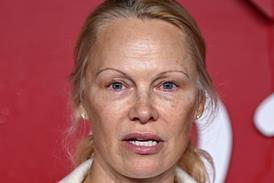- Hot topics
- Join Now!
Joining together to stop leprosy
2020-03-23T00:00:00

Linda Todd, chief executive of The Leprosy Mission Scotland, explains that leprosy is not an ancient disease; it still ravages people today
To continue reading, register today for more access!
If you are a member or a registered user, or if you already have a login for another Premier website SIGN IN HERE

Sign up for your free account now!
Registering is quick and easy and gives you immediate access to read more articles, plus:
- You’ll receive a weekly newsletter every Saturday with the top stories of the week
- You can save articles to read later
- You can share your comments and thoughts on the stories
Or become a member today for unlimited access! Special offers are available!
If you already have an account with a Premier website SIGN IN HERE
Related articles
-
 Opinion
OpinionWhy your body size matters to God
2025-04-15T05:00:00Z By Hannah Wickins
‘I practice self-love by standing in front of the mirror, looking at my body (a recent revelation) and telling my body how much I am grateful for it and then thanking God for it, honouring his creation,’ says Hannah Wickens.
-
 Opinion
OpinionAre doctors over diagnosing mental health conditions and turning biblical, anthropological problems into illness in the process?
2025-04-08T06:53:00Z By Ann-Louise Graham
‘Commentators argue that, unlike physical disease, mental health diagnoses are typically not based on tests like blood work or scans. Rather, they stem from the standardized categorization of behaviours and other symptoms. The challenge, they suggest, is that once someone is “labelled” with a particular diagnosis, they may mistakenly believe they have an inherent biological flaw - which can ironically hinder their recovery,’ says Ann-Louise Graham.
-
 Opinion
OpinionIs bio-hacking on your checklist for a first date?
2025-04-08T06:34:00Z By Jemimah Wright
’The Bible teaches us that we are to honour God with our bodies (1 Corinthians 6:19-20), and while seeking to improve our health is not inherently wrong, we must not elevate any practice above our relationship with God,’ says Jemimah Wright.
More from Home
-
 Opinion
OpinionShowing our kids that following Jesus is a great adventure
2021-06-16T00:00:00Z
As we approach Father’s Day, Andy Frost thinks back to how his dad influenced his own Christian journey when he was younger. He also shares details of a great new resource to help fathers as they take their kids on an adventure of faith.
-
 Opinion
OpinionG7: we needed more actionable steps
2021-06-15T00:00:00Z
Lovely Chavan from the Young Christian Climate Network believes the G7 talked about many vital issues, but didn’t provide a clear explanation on what happens next
-
 Opinion
Opinion‘World leaders must stop reiterating empty promises’
2021-06-15T00:00:00Z
Rachel Mander from the Young Christian Climate Network reflects on the recent G7 summit in Cornwall
- Issues
- Topics A-Z
- Writers A-Z
- © 2025 Woman Alive
Site powered by Webvision Cloud






















